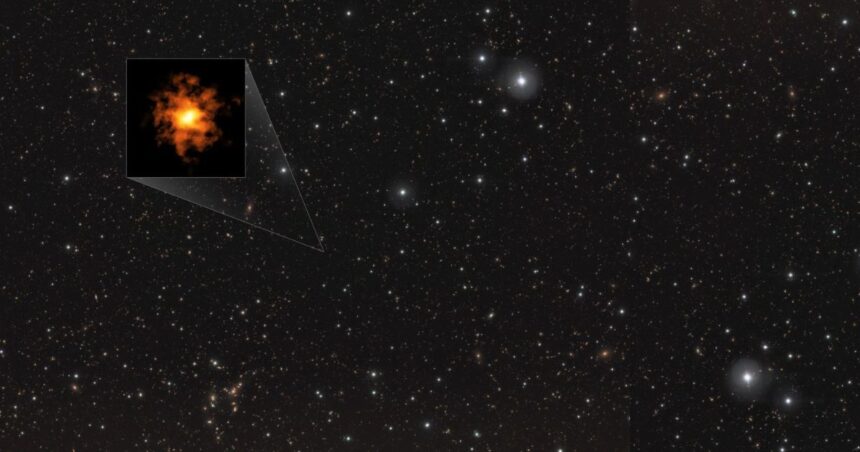Recently, astronomers found a galaxy that mirrors our modern Milky Way galaxy. Founded galaxy despite existing just 700 million years after the Big Bang. Astronomers named this ancient galaxy REBELS-25. This galaxy has left scientists puzzled.
The largest telescope on Earth has observed the REBELS-25 galaxy. It was observed using the Atacama Large Millimeter/submillimeter Array (ALMA) and the European Southern Observatory’s Visible and Infrared Survey Telescope for Astronomy (VISTA).
The images captured by these powerful telescopes show a smooth, rotating disk structure, much like the Milky Way. This orderly appearance is surprising because early galaxies were expected to be chaotic and clumpy.
The discovery of REBELS-25 challenges existing theories of galaxy formation. According to current models, galaxies in the early universe should have taken billions of years to develop such organized structures. The presence of a Milky Way-like galaxy so soon after the Big Bang suggests that galaxies may form and evolve much faster than previously thought.
Astronomers are now re-evaluating their understanding of how galaxies evolve. The discovery of REBELS-25 opens up new avenues of research and raises questions about the processes that led to the formation of such orderly galaxies in the early universe. This finding could help scientists refine their models and better understand the history of galaxy formation.
The study of REBELS-25 also provides valuable insights into the conditions of the early universe. By observing galaxies from this period, astronomers can learn more about the environment in which stars and planets formed. This knowledge is crucial for understanding the evolution of the cosmos and the factors that influenced the development of galaxies like the Milky Way.
One theory suggests that the orderly structure of REBELS-25 could be due to the presence of cold gas streams that fed the galaxy during its formation.
These streams provided a steady material supply, allowing the galaxy to form and maintain its disk structure. This process would differ from the chaotic mergers and collisions previously thought to dominate the early universe.
In addition to its smooth disk, REBELS-25 also has distinct spiral arms, similar to those seen in the Milky Way. These features indicate that the galaxy has a well-defined rotational pattern, which is unexpected for a galaxy of its age. The presence of spiral arms suggests that the forces shaping REBELS-25 are more complex than previously understood.
Astronomers are excited about the potential discoveries that REBELS-25 could lead to. By studying this ancient galaxy, scientists hope to uncover more about the factors that influenced the formation and evolution of galaxies in the early universe.
The findings from REBELS-25 could help researchers develop new theories about the processes that shape galaxies over billions of years.
The discovery of REBELS-25 is also a testament to the capabilities of modern telescopes and technology. The detailed images captured by ALMA and VISTA provide an unprecedented look at the structure of distant galaxies. These observations are helping astronomers push the boundaries of our understanding of the universe.





